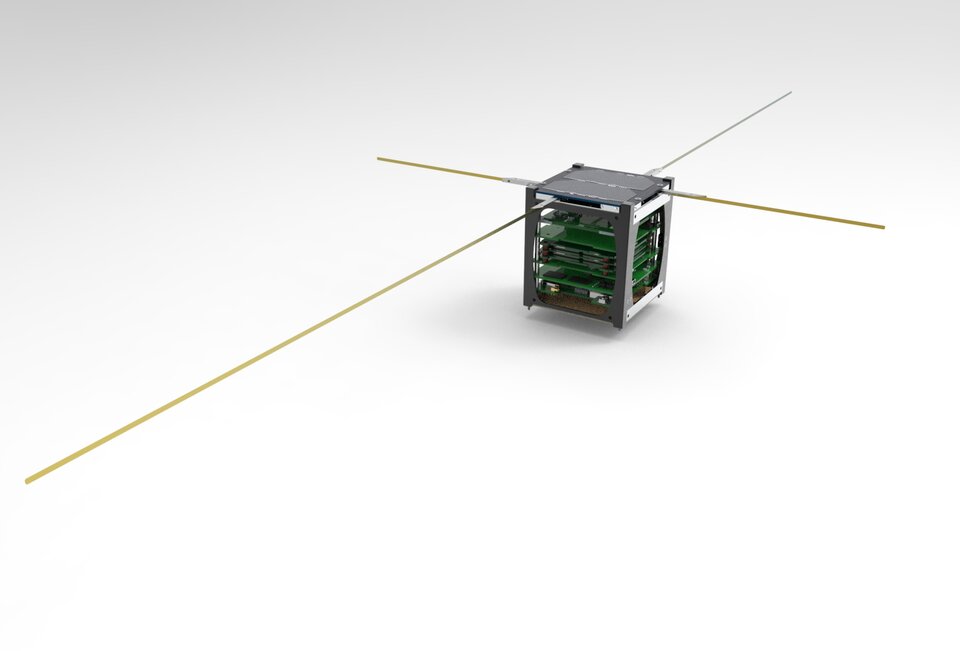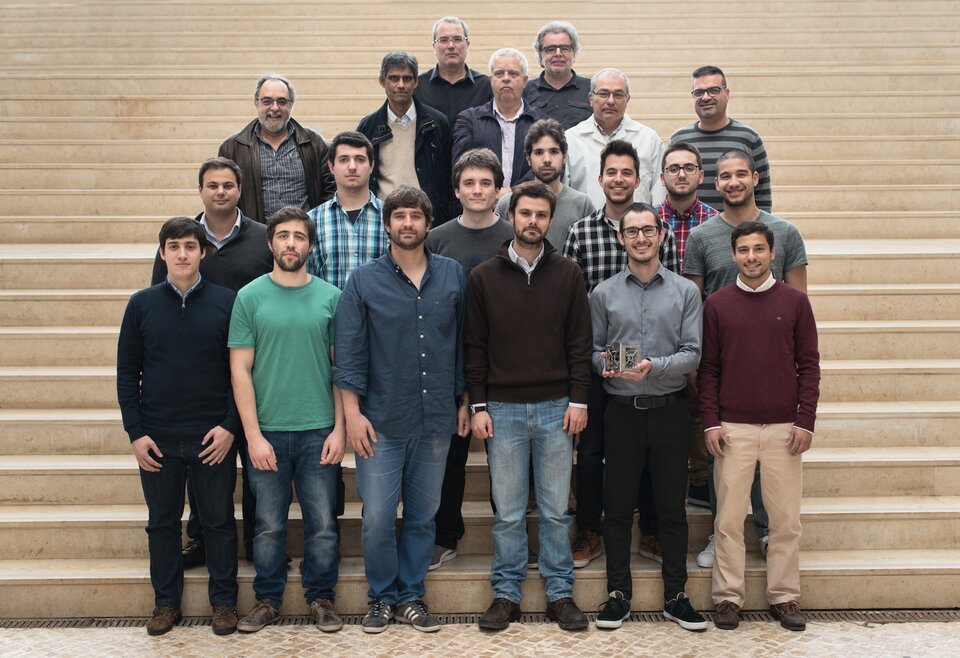Meet the team: ISTsat-1
TheISTsat-1 is the first nanosatellite project developed by students at the Instituto Superior Técnico / University of Lisbon in Portugal. The design is based on the popular CubeSat standard and is mostly composed of self-developed subsystems. For its first CubeSat mission, the team chose to develop a payload to demonstrate the ADS-B aircraft detection technology in orbit.
The mission

The primary goal of the ISTsat-1 mission is to provide students from the University of Lisbon – Instituto Superior Técnico with an interesting and challenging hands-on project, in order to foster their enthusiasm for space science and technology and expose them to the full project life cycle of a complex system. The secondary objective is related to the satellite mission: to demonstrate the ADS-B aircraft detection technology in orbit, analysing collected tracking data and correlating it with ground-based tracking datasets.
The success of the primary objective will be measured by the results achieved by the students throughout the life cycle, namely: academic publications such as BSc and MSc thesis and conference papers, execution of the assembly, integration and verification campaigns, successful completion of ESA’s ‘Fly Your Satellite!’ milestones and production of needed documentation.
The success of the secondary objective will be measured by the exploitation and analysis of the mission payload data. The payload will receive and decode ADS-B messages from aircraft flying below the satellite, thanks to a dedicated receiver and a patch antenna facing nadir. These messages will be filtered in-orbit according to parameters such as location and aircraft identifier. By comparing the received data with well known, ground-based flight data, the team will be able to characterise the aircraft transmitter’s cone of silence, as well as the probability of target acquisition, detection and identification.
The team

Several B.Sc., M.Sc. and PhD students from aerospace engineering, electrical engineering, communication networks engineering and computer engineering are working on this project, hoping to gain experience in order to develop further space missions in the future. Most M.Sc. students are developing the ISTSat-1 subsystems as part of their Master’s Thesis, while for others the project is completely extracurricular. The PhD students ensure the continuity of the project, coordinating the development effort.
The team’s main areas of expertise include embedded system design and testing, radio-frequency engineering (including antenna design and testing) and software engineering.
CubeSat quick facts
| Payload | Self-developed ADS-B receiver (including patch antenna) |
| Ground station | CS5CEP – IST Taguspark (Lisbon, Portugal) |
| Dimensions | Stowed <100 x 100 x 113mm> |
| Mass | 1095 g |
| Power consumption | 700-1100 mW |
| Solar panels | 5 solar panels (+X -X +Y -Y +Z). Body mounted. |
| Mission lifetime | 12 months |
| Website | www.istsat-one.tecnico.ulisboa.pt/ |















 Germany
Germany
 Austria
Austria
 Belgium
Belgium
 Denmark
Denmark
 Spain
Spain
 Estonia
Estonia
 Finland
Finland
 France
France
 Greece
Greece
 Hungary
Hungary
 Ireland
Ireland
 Italy
Italy
 Luxembourg
Luxembourg
 Norway
Norway
 The Netherlands
The Netherlands
 Poland
Poland
 Portugal
Portugal
 Czechia
Czechia
 Romania
Romania
 United Kingdom
United Kingdom
 Slovenia
Slovenia
 Sweden
Sweden
 Switzerland
Switzerland

























